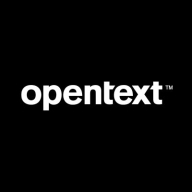

OpenText Analytics Database (Vertica) and Snowflake compete in the data warehousing category. Vertica appears to have an advantage in analytics and speed, while Snowflake excels in seamless cloud integration and ease of use.
Features: OpenText Analytics Database (Vertica) is noted for fast query processing, cost-effective storage, and powerful analytic capabilities. Its clustering and parallel data processing enhance performance. Snowflake offers high flexibility with multi-format data access, seamless scalability, and dynamic partitioning, including time travel and excellent cloud integration.
Room for Improvement: Vertica faces challenges in transaction handling and lacks comprehensive developer tools. Enhancements in documentation, monitoring, and machine learning features are needed. Snowflake could improve spatial query support and pricing transparency. Users also desire improvements in stored procedures and advanced analytics.
Ease of Deployment and Customer Service: Vertica provides deployment flexibility across on-premises, hybrid, and public cloud settings, but customer service quality varies, possibly due to transition experiences. Snowflake seamlessly integrates with public and private clouds, receiving high marks for ease of use and rapid deployment, though some variability exists in technical support.
Pricing and ROI: Vertica is priced on data volume, offering cost efficiency but potentially high initial costs; users find value after configuration. Snowflake's consumption-based pricing provides flexibility but causes confusion due to credit cost variations. Both deliver strong ROI, with Vertica excelling in analytics and Snowflake in scalable computing.
I received great support in migrating data to Snowflake, with quick responses and innovative solutions.
I am satisfied with the work of technical support from Snowflake; they are responsive and helpful.
The technical support from Snowflake is very good, nice, and efficient.
Snowflake is very scalable and has a dedicated team constantly improving the product.
The billing doubles with size increase, but processing does not necessarily speed up accordingly.
Recently, Snowflake has introduced streaming capabilities, real-time and dynamic tables, along with various connectors.
Snowflake is very stable, especially when used with AWS.
Snowflake as a SaaS offering means that maintenance isn't an issue for me.
Enhancements in user experience for data observability and quality checks would be beneficial, as these tasks currently require SQL coding, which might be challenging for some users.
What things you are going with to ask the support and how we manage the relationship matters a lot.
If more connectors were brought in and more visibility features were added, particularly around cost tracking in the FinOps area, it would be beneficial.
Snowflake's pricing is on the higher side.
Snowflake lacks transparency in estimating resource usage.
We had a comparison with Databricks and Snowflake a few months back, and this auto-scaling takes an edge within Snowflake; that's what our observation reflects.
I have used the Snowflake Zero-Copy Cloning feature in the past while prototyping data in lower environments. This feature is helpful as it saves a lot of time during the data replication process.
Snowflake is a data lake on the cloud where all processing happens in memory, resulting in very fast query responses.
| Product | Market Share (%) |
|---|---|
| Snowflake | 16.1% |
| OpenText Analytics Database (Vertica) | 6.1% |
| Other | 77.8% |


| Company Size | Count |
|---|---|
| Small Business | 29 |
| Midsize Enterprise | 23 |
| Large Enterprise | 38 |
| Company Size | Count |
|---|---|
| Small Business | 29 |
| Midsize Enterprise | 20 |
| Large Enterprise | 58 |
OpenText Analytics Database Vertica is known for its fast data loading and efficient query processing, providing scalability and user-friendliness with a low cost per TB. It supports large data volumes with OLAP, clustering, and parallel ingestion capabilities.
OpenText Analytics Database Vertica is designed to handle substantial data volumes with a focus on speed and efficient storage through its columnar architecture. It offers advanced performance features like workload isolation and compression, ensuring flexibility and high availability. The database is optimized for scalable data management, supporting data scientists and analysts with real-time reporting and analytics. Its architecture is built to facilitate hybrid deployments on-premises or within cloud environments, integrating seamlessly with business intelligence tools like Tableau. However, challenges such as improved transactional capabilities, optimized delete processes, and better real-time loading need addressing.
What features define OpenText Analytics Database Vertica?OpenText Analytics Database Vertica's implementation spans industries such as finance, healthcare, and telecommunications. It serves as a central data warehouse offering scalable management, high-speed processing, and geospatial functions. Companies benefit from its capacity to integrate machine learning and operational reporting, enhancing analytical capabilities.
Snowflake provides a modern data warehousing solution with features designed for seamless integration, scalability, and consumption-based pricing. It handles large datasets efficiently, making it a market leader for businesses migrating to the cloud.
Snowflake offers a flexible architecture that separates storage and compute resources, supporting efficient ETL jobs. Known for scalability and ease of use, it features built-in time zone conversion and robust data sharing capabilities. Its enhanced security, performance, and ability to handle semi-structured data are notable. Users suggest improvements in UI, pricing, on-premises integration, and data science functions, while calling for better transaction performance and machine learning capabilities. Users benefit from effective SQL querying, real-time analytics, and sharing options, supporting comprehensive data analysis with tools like Tableau and Power BI.
What are Snowflake's Key Features?
What Benefits Should You Look for?
In industries like finance, healthcare, and retail, Snowflake's flexible data warehousing and analytics capabilities facilitate cloud migration, streamline data storage, and allow organizations to consolidate data from multiple sources for advanced insights and AI-driven strategies. Its integration with analytics tools supports comprehensive data analysis and reporting tasks.
We monitor all Cloud Data Warehouse reviews to prevent fraudulent reviews and keep review quality high. We do not post reviews by company employees or direct competitors. We validate each review for authenticity via cross-reference with LinkedIn, and personal follow-up with the reviewer when necessary.